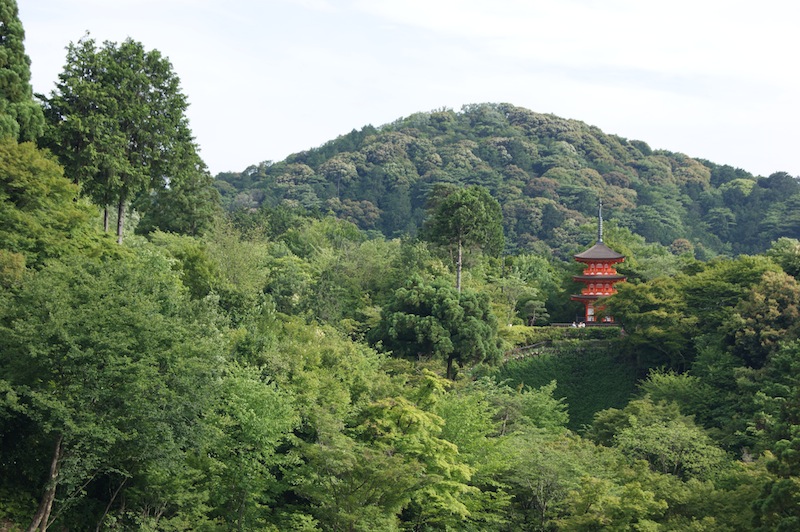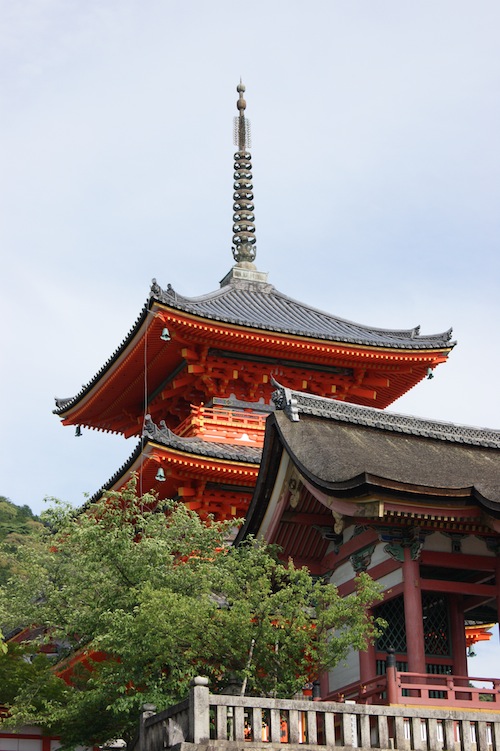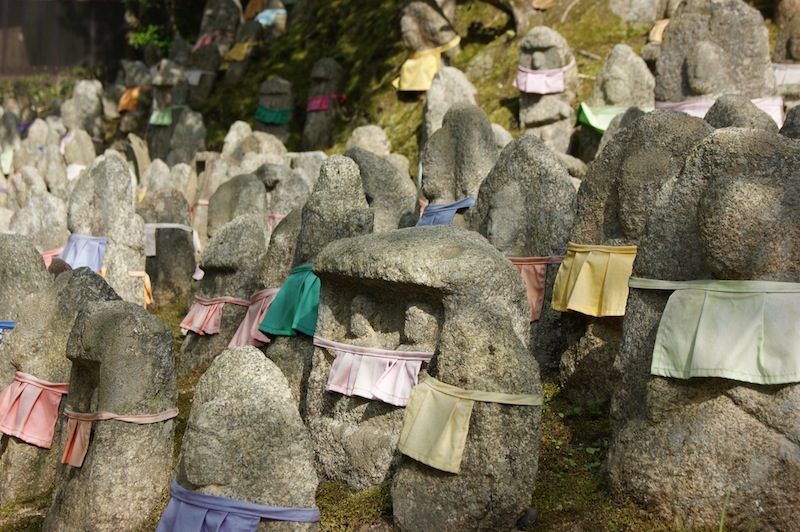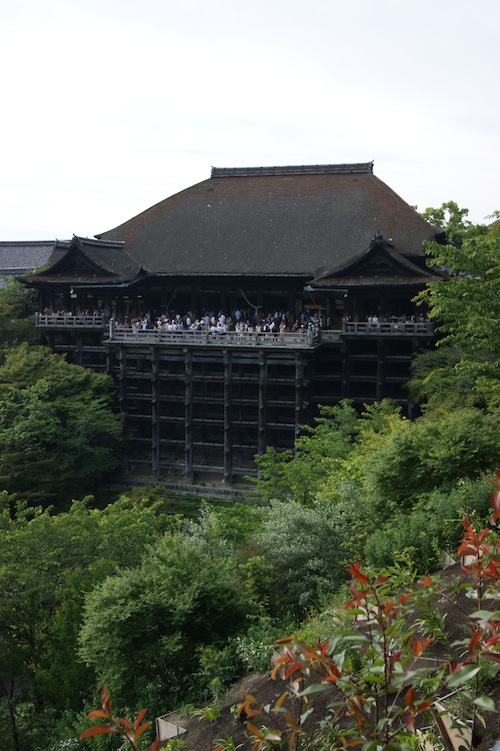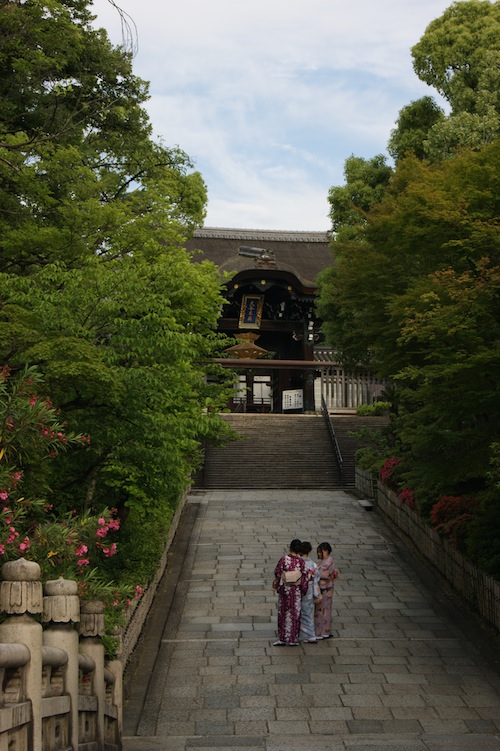Our stay in Takayama was over and it was time to head to Kyoto, the historic heart of Japan and the climax of our fortnight-long trip.
Takayama had made for an interesting diversion, offered a taste of a smaller Japanese city, but three days was enough. Indeed, people we’d met there were surprised we’d stopped for so long. So we left the Best Western – a friendly if not outstanding hotel – and ventured the few yards to the station to retrace our steps to Nagoya on the Japan Railways Limited Express train. On the platform were familiar faces, people we’d seen at the tourist sites and in the bars and restaurants.
The journey and the landscape were familiar – the hills and mountains, forests and rivers, dams and hydroelectric plants, pylons clogged with wires and endless paddy fields. We positively raced down the line, arrived in Nagoya on time and changed on to the bullet train at Nagoya for the short jump to Kyoto, through an unexceptional landscape broken only by the odd stretch of water.
Kyoto came as a bit of a surprise as we trundled through its streets in a taxi from the station to the Hyatt Regency Hotel. I was expecting the city to be a time capsule, all history and temples. In fact, most of what we saw was much like Tokyo or Takayama – modern, a little chaotic and a largely characterless sprawl. It’s only in places that Kyoto becomes a spectacular museum piece and showcase of the nation’s greatest architecture, culture and religion. Our hotel was quite impressive too, with a 1970s vibe and a decent Italian restaurant, where we ate lunch and waited for our plush room to become available.
In the afternoon, in the sweltering heat, we walked to one of the city’s million or so temples and UNESCO World Heritage Sites, the Kiyomizu-dera. A tiring climb up a hill past numerous souvenir and craft shops saw us joined by what felt like the entire population of Japan and China.
The temple was absolutely rammed so we found a quiet corner nearby, had a beer and chilled out for a bit, before battling our way through the crowds and grounds. There were plenty of buildings, some of them being restored, some painted a startlingly beautiful orange. Amid the woods stood a pagoda, which we walked to and found the best views of the main hall, jutting out over the hillside supported by immense wooden pillars.
Below, a little waterfall had been turned into a shrine for the faithful, who queued to wash in the water and make their devotions. I tried to get in the mood but it was difficult with so many people around, all getting in the way as they took photos and wielded selfie sticks like Samurai with their swords. There were so many little shops and stalls, it felt more like a market than a temple. Had Kyoto’s charms been devastated by mass tourism?
We had a nap at the hotel and later caught the metro to downtown, the main nightlife area. Crossing the river, where numerous young couples sat together on the banks in the gloom, we found a city buzzing – a relief after the relative quiet of Takayama.
We walked down atmospheric Pontocho, a long but bustling alley lined with restaurants and bars, traditional wooden buildings and red and white lanterns. All hid their attractions behind screens and doors, making it difficult to make a choice. Many of the ones on the river side of the street had verandas built on stilts, standing above a little canal that ran parallel to the Kamo River. We stopped at one of the bars, Atlantis, for a drink.
We dined at Copain, a friendly katsu place where jazz played and our chef deep-fried one thing after another until we told her to stop. Mostly it was delicious. A friendly local helped translate, and talk was of a large earthquake that had struck in the ocean far to the south. Apparently it shook buildings on land and stopped the trains, but the earth hadn’t moved for us.
After dinner we stopped at the oddly named jazz bar Hello Dolly. It looked like a cross between a traditional American bar and a British granny’s outdated living room, which was perhaps what a local considered to be the perfect representation of a western pub.It was a friendly place and we had a seat, but I doubt the concept will catch on.

